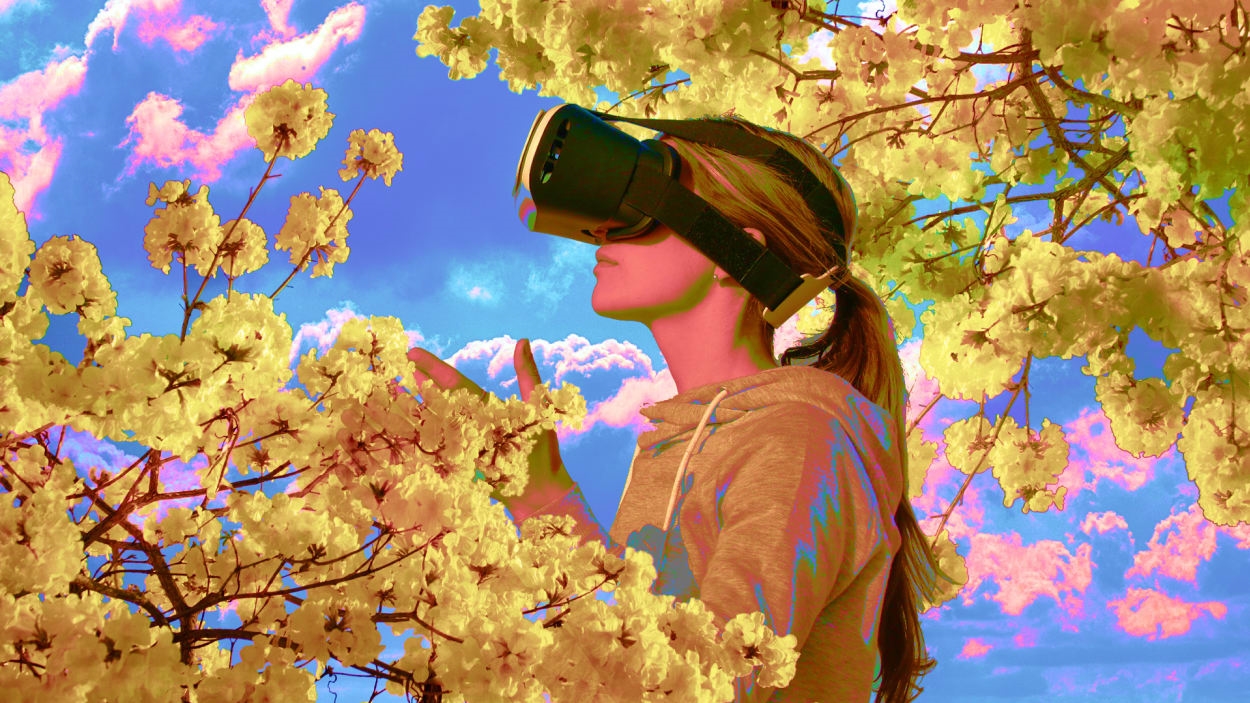Can VR act as a digital therapeutic?
Our digital, two-dimensional lives leave little room for focus. Our eyes dart from screen to screen over the course of the day as notifications and messages draw our attention away from tasks, from relaxation, from the faces of our loved ones. Through all of its flatness, our digital lives are dominated by distraction—so much so that we can sometimes forget to breathe.
Finding lasting inner peace from within this flattened world can be a neurological nightmare. Mindfulness and meditation apps, digital health’s answer in the last decade, use many of the same engagement methods that have propelled other consumer applications like games and fitness apps to success. Strategies like achievements and social connectivity have kept many users coming back to engage in evidence-based, clinically effective therapies. But even the most effective and engaging mindfulness apps can’t transcend the noise and distraction of our everyday lives.
At the end of the day, these digital therapeutics exist on a flat screen, tucked away with the rest of our apps. They are additive to our experience. Even while we use them, our brains remain overwhelmed by the deluge of stimuli that surround us—light, sounds, push notifications, the things we’re touching, the things we’re hearing.
We can improve our relationship with technology beyond these two-dimensional experiences. There are neurological benefits to engaging in an immersive, multisensory environment where experiences can be controlled, where stimuli can be regulated, eliminated, or populated with real or simulated humans. In these environments, there is no competition for attention. The simulation can be used to calm or even to deliberately arouse fear and stress in a controlled way. VR is a unique medium that can transcend the overwhelming clamor of the digital age, if we use it for good.
Within the persistent metaverse exists the potential to not only liberate ourselves from the distractions that surround us, but the opportunity to create immersive and engaging therapeutic experiences that help us resolve the anxiety, fear, and pain we feel in the real world.
A replacement for our sensory experiences
In his book Anxious: Using the Brain to Understand and Treat Fear and Anxiety, Joseph E. LeDoux describes a common experience wherein the fight-or-flight response is triggered. Imagine yourself walking through an autumnal forest when, out of the corner of your eye, you detect something long and curved, coiled among some fallen leaves. Your instinct is to freeze as your vision sends the signals to your amygdala, which registers a potential threat and triggers your fight-or-flight response, just milliseconds before sending that information to your prefrontal cortex to be further evaluated. In the blink of an eye, you determine the object is a stick, not a snake—and now having ruled out the threat, you can relax and continue along your path.
Involuntary neurological processes like this are the primitive survival responses that have kept our species thriving, but for many, our responses to these triggers need to be honed. In order to do that, the intervention needs to happen at both the preconscious and conscious level. Virtual reality can do this by placing users in controlled environments that replace their sensory inputs and stimulate various emotional and physiological states.
The clinical potential of immersive virtual environments is not a recent discovery. Medical researchers and innovators have been building VR programs that deliver evidence-based treatments like exposure therapy, cognitive behavioral therapy, and pain management for years. But one of the primary features of virtual reality—so fundamental it is often overlooked—is its propensity for utterly commanding user attention.
For people struggling with mental and behavioral health disorders like anxiety, depression, PTSD, and substance use disorder, VR can provide a welcome respite from reality and a safe, simulated space where the source of distress can be better understood and addressed. For people struggling with chronic pain—wherein the neurological interplay between physical and emotional pain can be so overwhelming that it leads to increased stress, anxiety, and depression—VR can provide physiological reprieve by stimulating the areas of the brain tasked with processing pain and blocking pain signals.
For all the benefits VR brings to the table as a medium, healthcare won’t fully realize VR’s potential unless it brings awe-inspiring, effective, and attention-competitive experiences to the persistent metaverse, where a growing base of consumers are already engaging, playing, and seeking help.
Play with your medicine
Modern medicine has an engagement problem. It was one of my greatest frustrations during my time as chief technology officer at Humana. Time and time again, I’d see healthcare consumers disengage from their treatments entirely, despite knowing their quality of life was on the line. This never made sense to me: Healthcare innovators routinely develop safe and effective technology-enabled innovations, but can’t seem to get healthcare consumers to use them long enough to be effective.
As humans, our social networks—the people we choose to surround ourselves with, not necessarily just online—play a critical role in our mental health. The social relationships we form and maintain determine our behaviors, our access to material resources, our engagement in social activities. Medicine has not been able to latch itself onto many of these fundamental levers of mental health. Despite research demonstrating the importance of engaging social supports in behavioral health treatments, healthcare is too often something we experience independently. Modern medicine is lonely. We can change that in the metaverse.
Virtual reality may be a powerful therapeutic tool on its own, but a digital therapeutic delivered in a persistent metaverse—where communities are connected and engaged—can make it even more compelling and engaging.
A virtual reality therapy for substance use disorder, for example, can be delivered independent of the metaverse, in an institutional medical setting. The user might be completely isolated and disconnected from others during the VR experience, but the treatment itself may still be clinically effective. Now imagine that same digital therapy delivered in the metaverse and anchored in the methods of engagement that make it compelling: a persistent virtual world, interactions with meaningful and personalized spaces, a digital identity that is as anonymized (or not) as you want to be, and a community of people having similar experiences.
Building experiences like that will take time, and will require a collaborative effort between the healthcare and gaming industries to keep it safe. But the potential is too powerful and too possible to ignore. Digital therapeutics like these will retain their clinical efficacy and be enjoyable and repeatable experiences. People should want to return again and again.
Inside the metaverse lies an opportunity for healthcare to flip the script on its engagement dilemma, to make healing experiences as engaging as they are powerful by taking them into virtual spaces—spaces where more and more consumers are engaging, playing, and seeking help every day. The notion of a multisensory immersive digital experience is a powerful one. We can use that power to eliminate distraction, drive healing experiences, and resolve the fear and pain we feel in the real world.
Aaron Gani is the founder and CEO of BehaVR, a VR digital wellness and digital therapeutics experiences company.
(12)



